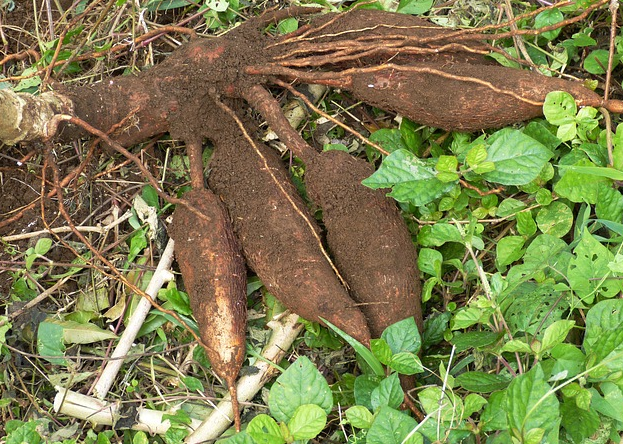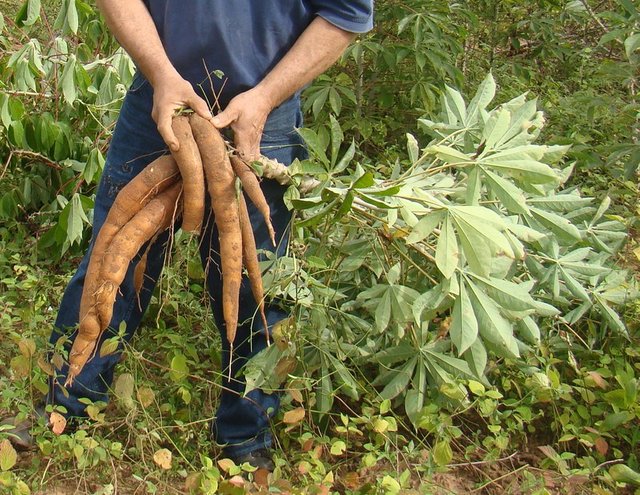Growing cassava I am
Cassava is also known as cassava or cassava, which is native to the South American tropics. Cassava is a plant that measures 1-3 meters in height, its adaptation is very easy, the costs to establish this crop are very low, it has a wide field in the industry as in human and animal feed.
Cassava is also known as cassava or cassava, which is native to the South American tropics. Cassava is a plant that measures from 1 to 3 meters in height, its adaptation is very easy, the costs to establish this crop are very low, it has a wide field in the industry as in human and animal feeding, reaching to be the most consumed root in Costa Rica, whose cultivation area reaches 3000 ha.
The regions that can be adapted to cassava cultivation in Costa Rica are found from the sea level on the Atlantic coasts to the mountainous areas of the central valley. The places where they can best be economically exploited are places that can be mechanized. The soils in which the cassava crop is adapted are frank soils, rich in potassium, also grow well in low-lying soils with good internal drainages in which the pH is between 5, 2 and 6.5. The greatest damage caused to this plantation by waterlogging, which produces root rot and the death of the plant.
The best known varieties in Costa Rica are Valencia and Mangi, the best results is the first, is grown in any area of less than 1000 meters above sea level.
It is native to the South American tropics. It adapts easily to many media, its production costs are very low, high yields and its use in the industry are very broad.
What is consumed is the root and serves for human and animal food, whose area in Costa Rica reaches up to 3,000 hectares.
 [Fuente]
[Fuente]
- BOTANY
The plant is an annual shrub with knotted stems, cylindrical branches. The height is 1 - 4 meters, the bearing can be erect or hanging, with buds in the axils of the leaves its surface is smooth or rough and its diameter varies from 2 -7 cm.
Root system:
It is fasciculate, the roots grow in radial - elongated form taking several forms, sometimes reaching large sizes, although it usually oxidizes between 30 - 100 cm. This tuberous root is formed as a result of the thickening of the secondary roots, spindle-shaped, extreme pointed and cylindrical very variable. The color varies according to the variety.
- The sheet:
They are alternating palmate and lobed with 3 - 7 lobes of lanceolate or narrow form, the petioles are long of bright red or greenish color, their flowers are runida in clusters, possesses three types of flowers which are: masculine, feminine and hermaphroditic. The fertilization is usually crossed the fruit is a poly lobular capsule of 3 - 5 lobes with 6 wings that open when ripe with a few seeds.
- CLIMATE AND SOILS
It adapts from sea level on the Atlantic coast and the Pacific to the central mountainous area. But for the greater production of economic export must be cultivated in low soils, so that the cultural work can be made mechanized.
The best soils are the Franks, rich in potassium (K), but it adapts well with medium and low fertility, pH between 5.2-6.5. Flooding should be avoided, because it causes root rot.
It is produced in the North zone, but in any zone it adapts very well, what if it is necessary to know that at least one precipitation less than 1 000 mm, but well distributed during the crop cycle and sowing at any time of the year. year, but in dry places it must be at the beginning of the rain.
 [Fuente]
[Fuente]
- VARIETIES
Valencia and Mangi are the most common in Costa Rica, but valence is the one with the highest production
- SOWING
It can be flat, if it has good drainage and if there is not much rain, so it is done in lomoles and facilitates its development preventing the root rot.
The planting distance of the Mangi cultivar is 1 m between rows and 5 cm between plants, but 1.2 m- 60 cm can be used between plants, 1x1 m, respectively.
- The main pests are thrips and mites, spider mites, but the plant is resistant to damage.
- The thrips (Frankiniella williansis) (Trips); the super elongation; Tretranichus sp.
- -The first disease is mange, the Valencia cultivar is used for its resistance.
- -The application of fungicide is made of copper, this could fight the disease.
- -The brown spot (Cercospora henningsii) causes a reddish-brown stain on the leaves. If there are large plantations affected its use is recommended.
- HARVEST
The yield of Costa Rican varieties reaches up to 20 tons / ha. The harvest time depends on the cultivar that will be used, from the area to be planted, although its average is 10 months.
If it is for export, it is recommended to harvest at 10 months, since at that age it reaches 40 cm which is the size that the market demands, with a thickness of 8 and 10 cm in diameter.
It is recommended to take the product the same day of harvest to the exporting plant. The harvest is done manually or semi-mechanized, but first you have to decamote it, that is, remove part of the foliage. This can increase the% of roots.
For export, nitrogen gas is used in the plastic bags in which it is packed, the paraffin wax is also used to maintain its quality and so that there is no transport of gases from the same root.
Here I am leaving my video harvesting yucca
Thank you very much you can follow me and vote for me